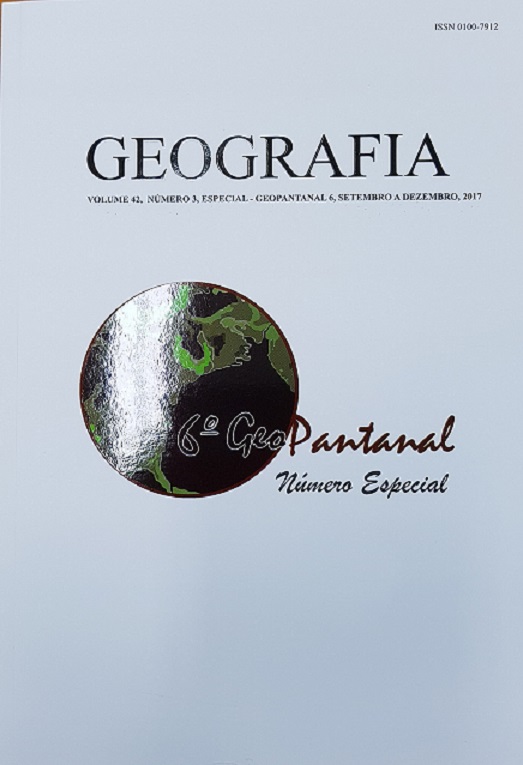GEOSTATISTICAL MODELING OF THE TEN-DAY RAINFALL IN MATO GROSSO STATE
DOI:
https://doi.org/10.5016/geografia.v42i3.13092Resumen
Mapping the spatial-temporal distribution of rainfall allows the analysis of tendencies and changes on local and regional scale, which is crucial for the development of environmental and agricultural projects. The objective of this paper is to adjust and choose semivariographic mathematical models to analyze the spatial variability of the 75 percentile rainfall in Mato Grosso State, covering October to March, to subsequently represent it on maps using Kriging techniques. Data from 155 weather stations in Mato Grosso S and around were used, with data for over ten years provided by the National Water Agency. The semivariograms were adjusted using the least squares method and chosen among spherical, exponential, and Gaussian models. The exponential model adjusted best to the experimental semivariograms using the criterion of standard deviation in reduced errors obtained from cross validation and level of dependence. The spatial variability of the rainfall was then mapped using Kriging techniquesDescargas
Publicado
Número
Sección
Licencia
Los autores mantienen los derechos de autor y otorgan a GEOGRAFIA el derecho de primera publicación, estando los artículos licenciados simultáneamente bajo la Licencia Creative Commons BY 4.0, que permite compartir y adaptar los artículos para cualquier propósito, siempre que se cumplan los créditos y disposiciones de derechos de imagen, privacidad. o derechos morales. Se puede acceder a otras atribuciones legales en: https://creativecommons.org/licenses/by/4.0/legalcode.en.

Geografia, Rio Claro, SP, Brasil- eISSN 1983-8700 - Licencia Creative Commons BY 4.0,





